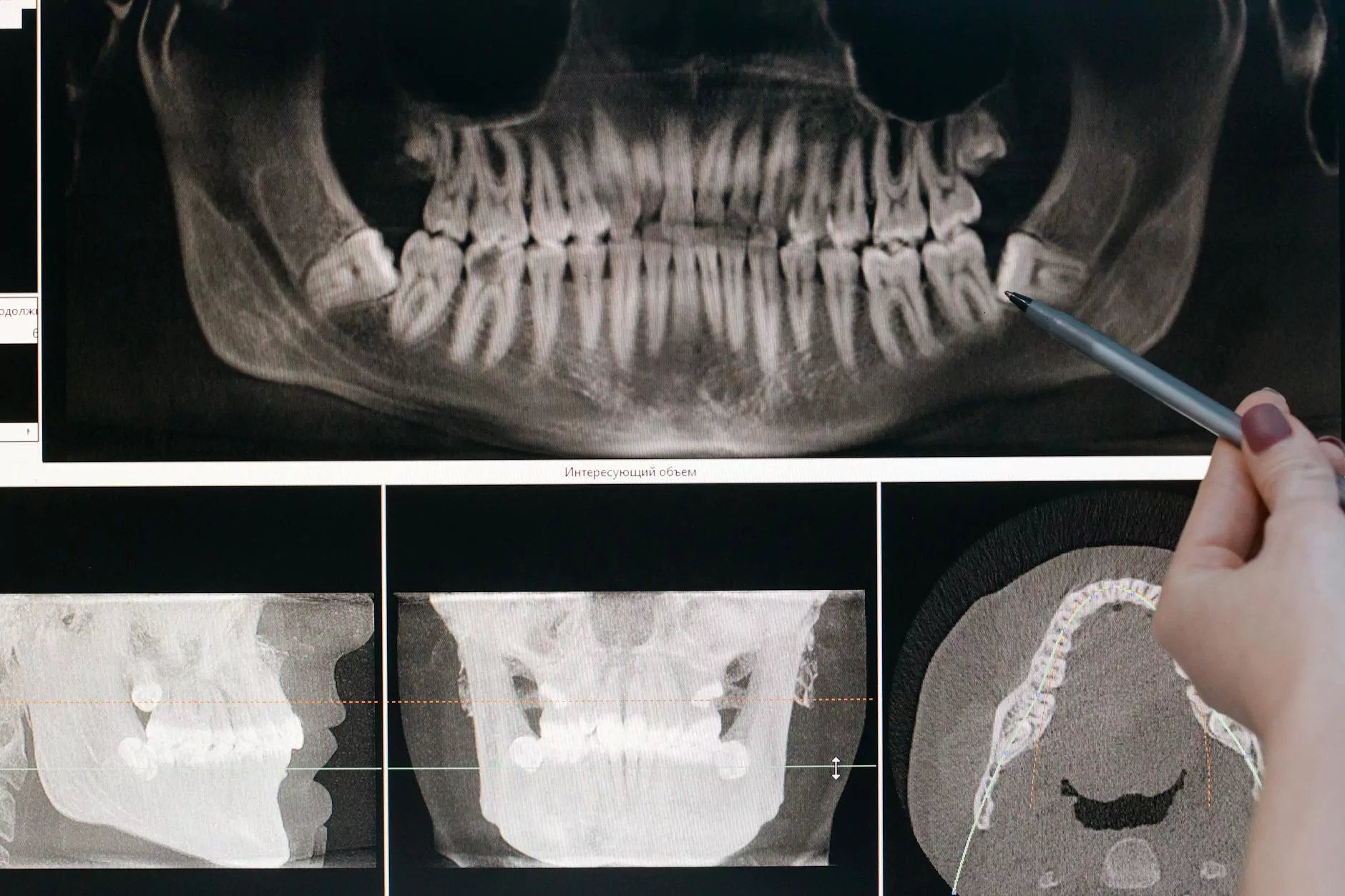Understanding T4 Pain: Causes, Symptoms, and Effective Treatment Strategies

T4 pain is a term used to describe discomfort or pain localized around the fourth thoracic vertebra in the mid-back region. While many individuals may not be familiar with the specific vertebral level involved, understanding the anatomical and physiological aspects of T4 pain is crucial for proper diagnosis and effective treatment. This comprehensive guide aims to shed light on the various facets of T4 pain, including its causes, symptoms, and the most advanced treatment options available today.
What Is T4 Pain?
T4 pain refers to pain originating from or radiating in the thoracic vertebrae at the level of the fourth thoracic vertebra (T4). Situated in the mid-back, T4 is part of the 12 vertebrae that comprise the thoracic spine, which supports the rib cage and protects vital organs such as the heart and lungs. Pain at this level can influence not only the back but also the chest, shoulders, and even the upper limbs, depending on nerve involvement.
The Anatomy of the Thoracic Spine and Its Role in T4 Pain
The thoracic spine consists of 12 vertebrae numbered T1 through T12, interconnected by facet joints, intervertebral discs, ligaments, and muscles. The T4 vertebra is intricately linked with the surrounding musculature, ribs, and nervous system. Its proximity to vital nerves and organs makes it susceptible to various sources of dysfunction that can manifest as pain.
- Vertebral Structure: Bony block providing stability and mobility.
- Nerves: Spinal nerves emanate from the spinal cord, passing through the intervertebral foramina near T4, transmitting signals to the chest, back, and extremities.
- Muscles and Ligaments: Support structures maintaining spinal alignment and facilitating movement.
- Ribs: Attachments to T4, contributing to thoracic cage integrity.
Common Causes of T4 Pain
T4 pain can stem from multiple origins, often involving complex interactions between structural, neurological, and inflammatory factors. Recognizing the precise cause is essential for selecting an effective treatment plan. Here are the predominant causes:
1. Mechanical Injuries and Strain
Overuse, sudden movements, or trauma can lead to muscle strains, ligament sprains, or joint dysfunction around T4. Improper posture, repetitive activities, and heavy lifting are notable contributing factors.
2. Herniated or Degenerated Intervertebral Discs
Degeneration of discs or herniation at the T4 level can compress adjacent nerves, causing localized and radiating pain. This often accompanies aging, poor ergonomics, or spinal injuries.
3. Osteoarthritis and Degenerative Disc Disease
Chronic wear and tear lead to joint degeneration, causing inflammation and pain in the mid-back region.
4. Postural Abnormalities
Conditions like kyphosis or scoliosis alter normal spinal curvature, exerting abnormal stress on T4 and surrounding structures, resulting in pain.
5. Nerve Impingement and Radiculopathy
An inflamed or compressed nerve at the T4 level may cause pain that radiates along the nerve pathway, resulting in sensations in the chest, shoulders, or arms.
6. Inflammatory and Systemic Conditions
Autoimmune disorders, infections, or systemic inflammation, such as rheumatoid arthritis, can involve the thoracic spine and produce persistent pain.
Recognizing the Symptoms of T4 Pain
Symptoms associated with T4 pain can vary widely depending on the cause. They often include:
- Localized Pain: Sharp, dull, or aching discomfort in the mid-back region at T4 level.
- Radiating Pain: Discomfort spreading to chest, shoulders, or upper limbs.
- Stiffness: Reduced mobility and stiffness in the mid-back area.
- Numbness or Tingling: Sensory changes if nerve impingement occurs.
- Weakness: Muscle weakness in the upper extremities if nerve roots are affected.
- Difficulty Breathing or Chest Discomfort: In cases involving the rib attachments or systemic causes.
Diagnostic Approach and When to Seek Professional Help
Proper diagnosis of T4 pain involves a comprehensive clinical evaluation, medical history review, and imaging studies. Healthcare providers may utilize:
- Physical Examination: Posture assessment, palpation, and assessment of range of motion.
- Imaging Tests: X-rays, MRI, or CT scans to visualize vertebral integrity, disc health, and nerve involvement.
- Nerve Conduction Studies: To evaluate nerve function if neurological symptoms are present.
It is crucial to consult health professionals specializing in Health & Medical, such as chiropractors or spinal specialists, especially if symptoms persist beyond a few days or worsen over time. Early intervention can prevent chronic pain development and improve outcomes.
Advanced Treatment Strategies for T4 Pain
The management of T4 pain depends on the underlying cause. The goal is to alleviate pain, improve function, and restore spinal health through a combination of conservative and, in some cases, surgical interventions. Here are the most effective approaches:
1. Chiropractic Care and Spinal Adjustments
Chiropractors play an essential role in managing thoracic pain by performing gentle, precise spinal manipulations to restore proper alignment, reduce nerve impingement, and improve mobility. Techniques include:
- Thoracic Adjustments: Focused on the T4 level to alleviate joint restrictions.
- Soft Tissue Therapy: Massage and myofascial release to ease muscle tension.
2. Physical Therapy and Rehabilitation
A tailored physical therapy program can strengthen supporting musculature, correct posture, and improve flexibility. Techniques involve:
- Stretching Exercises: To relieve muscle tightness around the thoracic area.
- Strengthening Regimens: To stabilize the spine and prevent recurrence.
- Posture Education: To promote ergonomic habits in daily activities.
3. Medications and Pain Management
NSAIDs, muscle relaxants, and topical analgesics can provide symptomatic relief, especially during acute phases. However, these should be used in conjunction with other therapies.
4. Invasive Procedures
When conservative treatments fail, interventions such as epidural steroid injections or surgical options like discectomy or spinal fusion may be considered after thorough evaluation by a specialist.
5. Holistic and Alternative Therapies
Complementary approaches, including acupuncture, chiropractic-massage integration, and mindfulness techniques, can support pain relief and enhance overall wellbeing.
Preventative Measures and Lifestyle Modifications
Maintaining spinal health involves proactive steps, such as:
- Ergonomic Workspace Setup: Ensuring proper chair, desk, and monitor positioning.
- Regular Exercise: To improve posture, strengthen back muscles, and enhance flexibility.
- Weight Management: To reduce unnecessary stress on the spine.
- Adequate Rest and Posture Awareness: Avoiding prolonged sitting or awkward positions.
The Role of Specialized Medical and Chiropractic Expertise
Advancing research and clinical expertise in Health & Medical, particularly in spinal health and chiropractic care, have significantly improved outcomes for patients suffering from T4 pain. Clinics like those found on iaom-us.com specialize in comprehensive spinal diagnostics, tailored adjustments, and rehabilitation programs focused on restoring normal function and reducing pain effectively.
Conclusion: Achieving Long-Term Relief from T4 Pain
Addressing T4 pain requires a multifaceted approach combining accurate diagnosis, targeted treatment, and lifestyle adjustments. With the right professional guidance—from chiropractors, physical therapists, or medical specialists—patients can experience significant relief, improved mobility, and a better quality of life.
Stay proactive in managing spinal health, seek expert care promptly, and adopt habits that protect and strengthen your back. By doing so, overcoming the challenges associated with T4 pain becomes not just possible but highly attainable.









